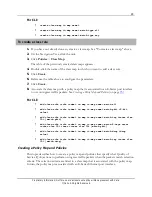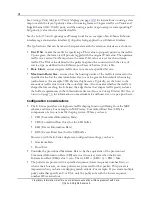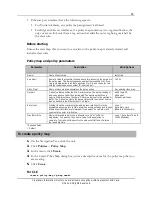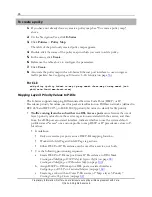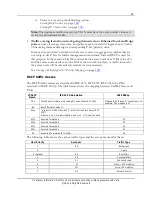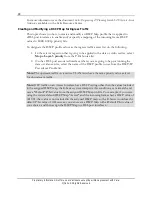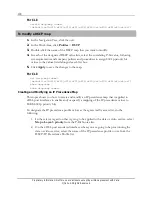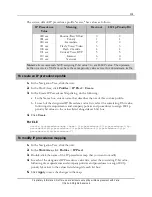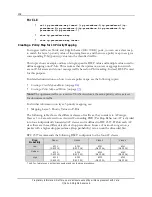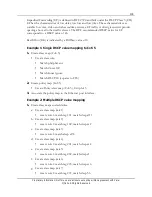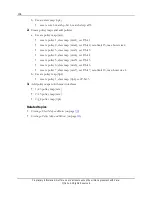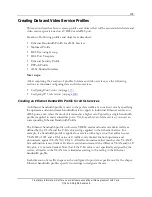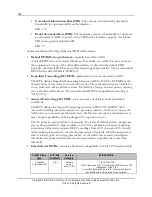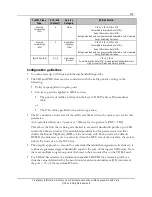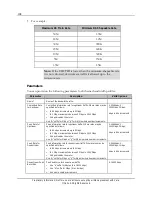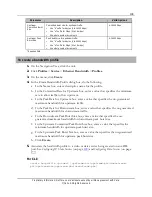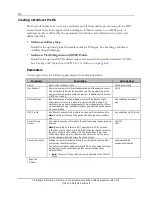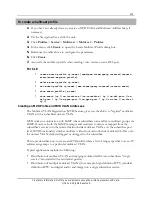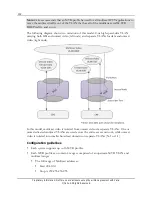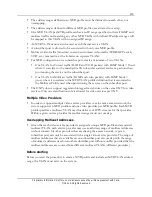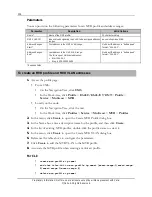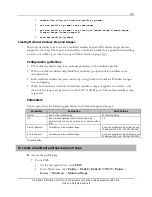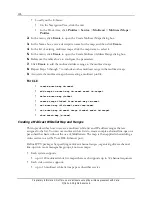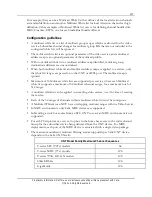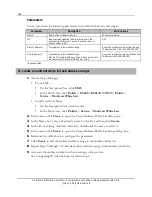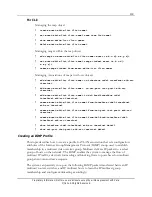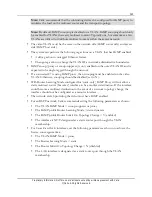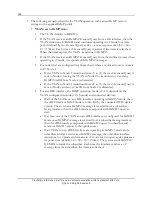
107
Proprietary Information: Not for use or disclosure except by written agreement with Calix.
© Calix. All Rights Reserved.
Traffic Class
Type
E7 P-bits
(default)
Service
Category
E7 BW Profile
Assured
Forwarding 1
(AF1)
4
Video
CIR>0, PIR>0, PIR>=CIR
Committed Information Rate (CIR) +
Peak Information Rate (PIR).
Both guaranteed and non-guaranteed bandwidth levels. Moderate
Delay and Delay Variation.
Assured
Forwarding 2
(AF2)
3
Application
signaling,
TLAN
CIR>0, PIR>0, PIR>=CIR
Committed Information Rate (CIR) +
Peak Information Rate (PIR).
Both guaranteed and non-guaranteed bandwidth levels. Moderate
Delay and Delay Variation.
Best Effort (BE)
0, 1, 2
High-speed
internet
CIR=0, PIR>0
Peak Information Rate (PIR): No guaranteed bandwidth levels.
Higher Levels of Delay and Delay Variation.
Configuration guidelines
You can create up to 100 custom Ethernet bandwidth profiles.
The CIR and PIR values must be consistent with the traffic priority settings in the
following:
Policy maps applied to ingress ports
Service tag actions applied to xDSL services
The priority of traffic as defined in the Layer 3 DSCP table or IP precedence
table
or
The P-bit value specified in the service tag action
The E7 calculates a burst size for the traffic rate limiter when the value is not set for this
parameter.
Auto-calculated burst size = peak rate * 80msec for the given rate (PBS = CBS)
This allows the flow that is being rate limited to exceed its bandwidth profile up to CIR
within the 80msec window. The established guideline for this parameter is to reflect
double the Round Trip Delay (RTD) of the network, with 40 ms used as the default
RTD. If the burst size is set to a value less than the MTU size of the interface, the system
adjusts the burst size to the MTU size.
The simplist approach to account for committed bandwidth and guarantee its delivery, is
to allocate guaranteed egress bandwidth equal to the sum of the ingress CIR values. Note
there are multiple congestion points that need to be accounted for on the VDSL2 card.
For VDSL2-based cards, the minimum-shapeable CIR/PIR for a transmit profile is a
dynamic value determined by the provisioned maximum downstream (DS) train rate of
the port (~3% of the maximum DS rate).

